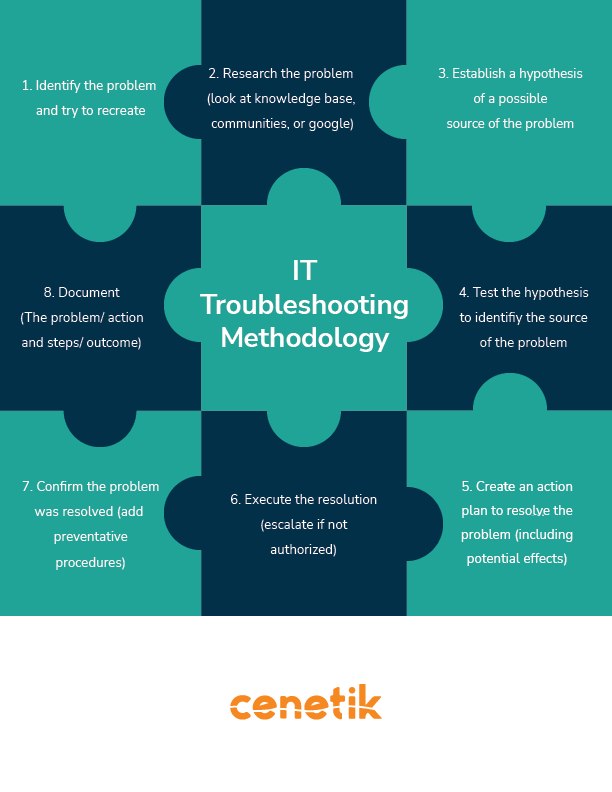
What is IT troubleshooting?
IT Troubleshooting is a systematic process used to locate the cause of a fault in a computer system and correct the relevant hardware and software issues. Approaching problem solving using a logical and methodical approach is essential to successful resolution.
IT troubleshooting is a critical skill in the modern workplace, as it allows IT professionals to quickly identify and resolve technical issues. The methodology used to troubleshoot IT problems involves a systematic approach that can help to identify the root cause of the issue and provide an effective solution.
In this article, we will discuss the various methods used in IT troubleshooting, including problem identification, analysis of available data, testing hypotheses, implementation of solutions and monitoring of results.
IT Troubleshooting Steps
- Identify the problem and try to recreate
- Research the problem
- Establish a hypothesis of a possible source of the problem
- Test the hypothesis to identify the source of the problem
- Create an action plan to resolve the problem
- Execute the resolution (or escalate if not authorized)
- Confirm the problem was resolved
- Document the problem, the steps, and the outcome
Why is troubleshooting process important?
Technical support’s crucial component of troubleshooting entails locating and fixing the problem’s root cause.
A methodical approach to problem-solving known as troubleshooting is particularly useful when dealing with situations including unexpected equipment failure and software or system faults. As a result, it involves using a range of approaches to identify equipment or system failure and carry out the necessary corrective action. It is frequently used in information technology (IT) as a strategy, typically to handle hardware or software issues. The objective is to avoid safety risks associated with product usage, ensure product longevity, save costs, and cure an issue.
